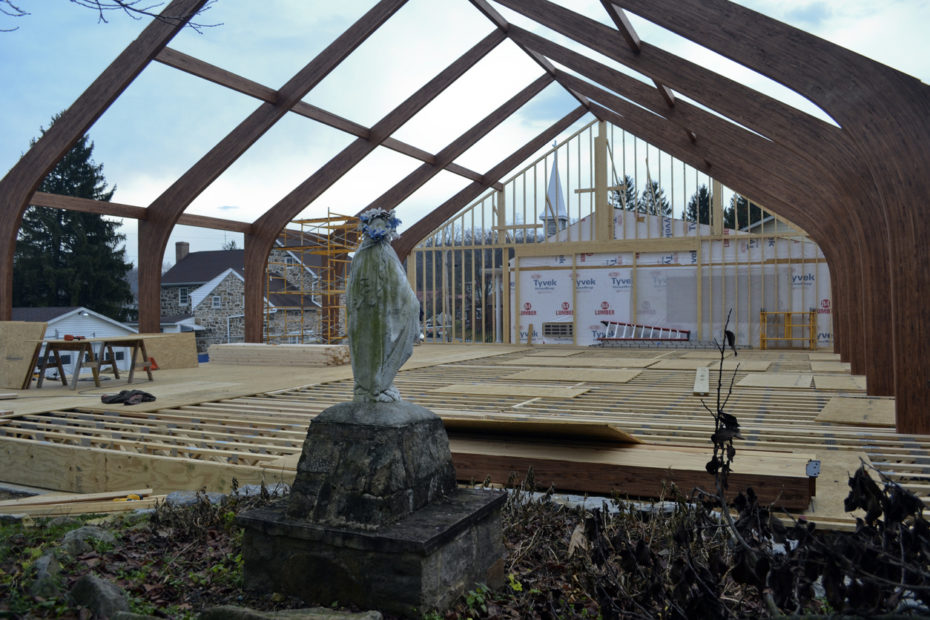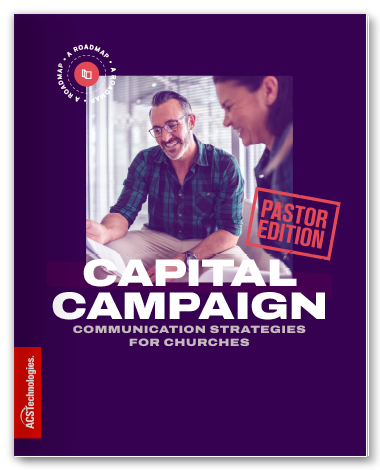There’s nothing more foundational to your campaign communications then developing a succinct and effective case for support.
In this series, we’re walking through a roadmap for communications during your capital campaign. While we’ve talked about how to inventory and assess your communications vehicles and your audiences through the lens of a campaign, the primary messaging will come from your case for support. If you’ve done due diligence in your campaign planning, you should have a clear idea of what your campaign will accomplish and how the project will transform those your ministry serves. If you’ve followed the pre-launch checklist for communications we provided earlier in this series, you’ll be ready to draft your case for support and embed its message throughout your communications.
So what is a case for support? Campaign case documents can take many forms, but the most common is a brochure or printed piece. It’s designed – visually and through its copy – to excite, inform and engage donors about the campaign project. Case documents for capital projects often include visuals or renderings of the envisioned project and/or photos.
A case for support typically contains the following components. The order may vary depending on the mission or project, but any case should address these areas:
The problem:
This section should introduce the challenge the campaign project will solve – why it’s important and why now.
The solution:
This should introduce the campaign project and why it’s the solution to the problem you outlined. This section is a good place to include a quote or two from those in the ministry or impacted by the ministry.
The strategy:
Why is your church or ministry uniquely positioned to do this project (new building, renovation, ministry expansion – whatever it is)? This is the place to outline the project plan, timing, and projected costs.
Partnership and Invitation:
Case documents typically close with an appeal to support the project. Because donors will be asked for different amounts based on their relationship and capacity, this section rarely makes a specific dollar request. Some churches choose to include a donor pyramid, sharing how many donors at what levels will be needed for the campaign to be successful. That pyramid or chart allows for conversation with each key donor individually about where they see themselves. It also allows donors who will respond to a public launch ask and appeal letter to understand their commitment in the context of the overall campaign need. This is another place where a quote from a lead donor or advocate can be impactful.
Conclusion
Your case for support will be the most-used and accessed document throughout the life of your campaign. It has to bring the project to life and clearly tie it to your church’s mission and ministry. You will often use sections or sentences from the case in your other communications, and the case should be the base document from which everything else emanates.
While it doesn’t have to be fancy or expensive, it is worth doing the highest quality job you can afford, knowing it will have a two-four-year shelf life and will be the piece speaking to your members and donors.
In the final entry of this series, we’ll talk about the look, feel, and theme of your campaign materials and branding.
Capital Campaign Communications: A Roadmap
One of the most critical – but most overlooked – part of planning a campaign is your communications plan.
Launching a campaign without a strategy in place for communications can create confusion at best. AND often leads to poor results.
This guide outlines key steps to developing your campaign case for support, your campaign branding, and theme and provides a pre-launch campaign communications checklist for churches. Don’t kick off a campaign without this roadmap.
Considering a Capital Campaign?
Capital campaigns are a daunting task, even under the best circumstances. If you’ve been considering — or putting off — a capital campaign to raise funds to grow your church or expand your ministry, the solution is here.
ACS Technologies® teamed up with Non-Profit DNA to offer an extensive and comprehensive consulting service. We want to help make your upcoming capital campaign a success. Through this partnership, you’ll have access to highly skilled, knowledgeable fundraising experts who will help with your campaign — every step of the way.
Visit Capital Campaigns on our website to request your consultation today!
Tim has over 30 years of experience in Church, Non-Profit Administration, Management, and Fund Development. Serving as an Executive Pastor and Chief Development Officer in growing Churches and Non-Profit Organizations. He has provided a wide range of expertise and resources. Tim serves as the Founder and CEO of Non-Profit DNA. A boutique firm committed to helping nonprofits and churches. By building their capacity through fundraising, leadership, team building, staff recruiting, and coaching.
Check out Tim’s latest book, Donors Are People Too





